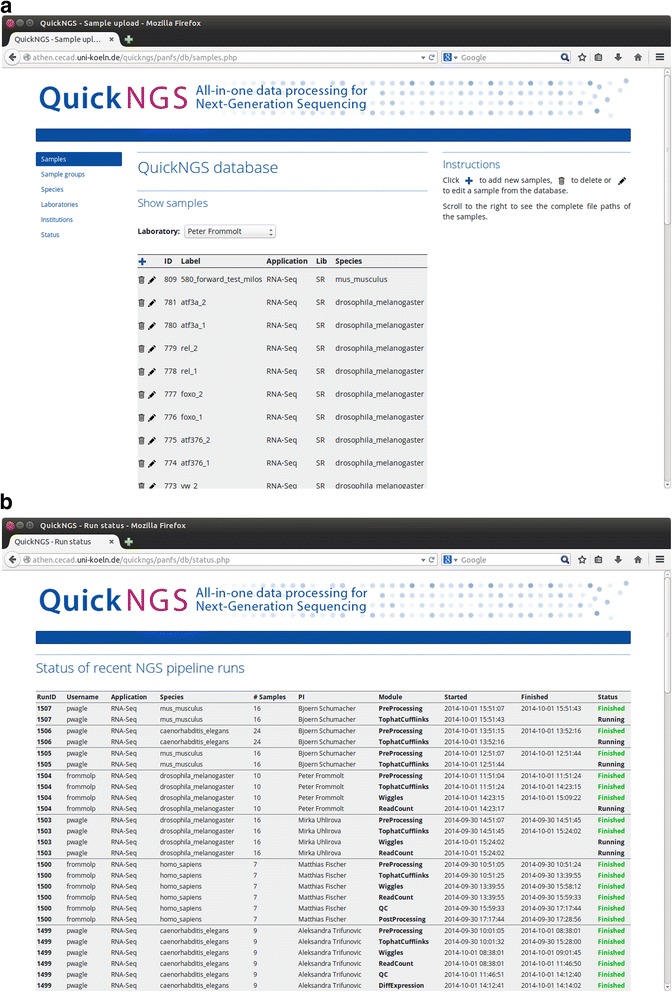Fig. 1.

a The QuickNGS database contains meta information on samples (species, application, file locations, sample labels, lab name, library type, batch information) and sample groups (samples which are forming groups to be compared). Both can be efficiently organized by an intuitive web interface. New samples and sample groups can be inserted (Additional file 4) by following the „ + “button. b The status page on the QuickNGS database monitors time, user information and current status of each QuickNGS module on a clearly arranged website, enabling password-protected interrogation of the current status from any working location, including mobile access
